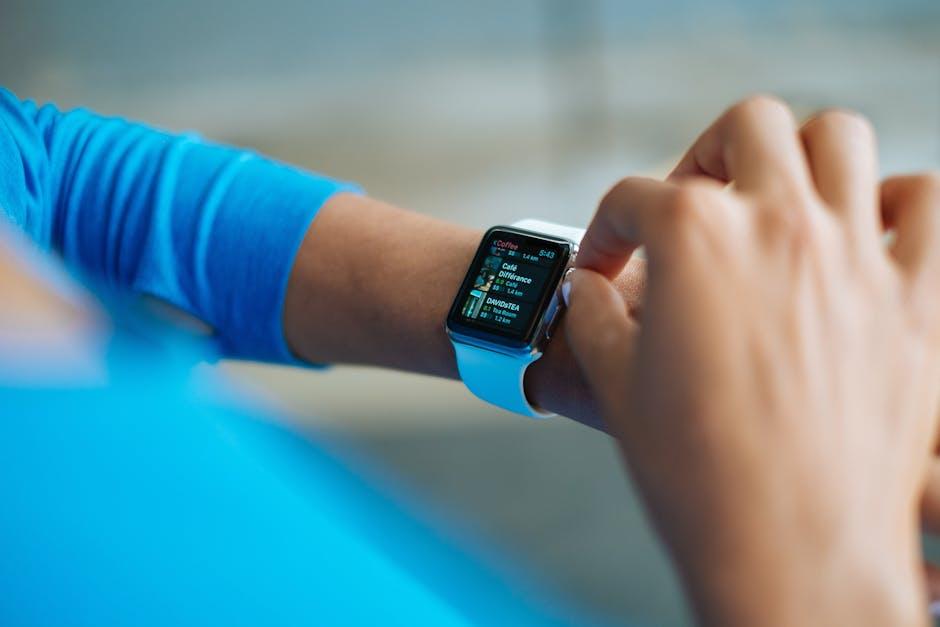In today’s digital landscape, our devices have become gateways to countless applications, each vying for a slice of our attention. But how often do we pause to consider exactly where our time goes amidst this virtual mosaic? Enter time-per-app tracking-a nuanced approach to monitoring not just the hours spent on a device, but the precise distribution of those hours across individual applications. This method offers more than mere numbers; it unveils patterns, habits, and opportunities for smarter digital engagement. By shedding light on the granular details of our app usage, time-per-app tracking empowers individuals and organizations alike to make informed decisions, optimize productivity, and foster a healthier balance between connectivity and focus.
Understanding Time Per App Tracking and Its Role in Productivity

Tracking the time spent on individual applications offers a transparent glance into how daily digital activities consume the workday. By isolating time usage per app, users can identify distractions, optimize workflow, and allocate efforts more effectively. This method empowers users to make informed decisions about which tools enhance productivity and which might hinder focus, transforming vague impressions into actionable insights. It’s not just about counting hours but understanding how each tool contributes to progress.
Benefits of time per app tracking include:
- Highlighting high-impact applications that boost efficiency
- Exposing time drains or non-essential usage patterns
- Facilitating balanced work sessions by managing app-switching habits
- Supporting data-driven adjustments to daily routines
| App Category | Average Time Spent | Productivity Impact |
|---|---|---|
| Communication | 2 hrs | Moderate |
| Creative Tools | 3 hrs | High |
| Social Media | 1 hr | Low |
| Project Management | 1.5 hrs | High |
Analyzing Usage Patterns to Enhance Work and Leisure Balance

Understanding your digital habits through detailed tracking reveals insightful trends about how time is allocated throughout the day. By monitoring app usage, you can identify periods where work overlaps into leisure without intention or when distractions disrupt productivity. This clarity empowers you to recalibrate your schedule, ensuring a more deliberate balance between essential tasks and well-deserved downtime. For instance, recognizing that social media apps consume an unexpected portion of your evening might inspire setting limits or choosing alternative relaxation methods.
Such analysis also highlights opportunities for improvement beyond mere time measurement. You can devise structured routines that incorporate frequent breaks or designate specific slots for creative pursuits and social interactions. Below is a concise comparison illustrating practical outcomes of time-per-app awareness:
| Usage Insight | Work Impact | Leisure Benefit |
|---|---|---|
| Excessive email checking | Frequent interruptions | Reduced focus hours |
| Overuse of entertainment apps | Delayed project timelines | Occasional guilt or unrest |
| Balanced app interaction | Streamlined workflow | Guilt-free relaxation |
- Track to understand: Start with awareness of true usage patterns.
- Set boundaries: Use insights to create intentional time slots for work and rest.
- Adjust regularly: Keep evolving your habits as priorities shift.
Implementing Time Per App Tracking for Smarter Digital Habits

Harnessing the power of detailed time-per-app tracking transforms the way we understand our digital interactions. By monitoring the exact duration spent within each application, users unlock a deeper level of self-awareness, enabling targeted adjustments to enhance productivity and reduce distractions. This granular insight goes beyond generic screen time reports, spotlighting which apps are true productivity boosters and which ones may be stealthily consuming more time than intended. Armed with this data, individuals and organizations alike can craft tailored strategies to optimize workflow, foster healthier digital habits, and prevent burnout.
Implementing effective time tracking involves more than just installing an app; it requires a thoughtful approach to data interpretation and action planning. Consider incorporating these key practices:
- Set clear goals: Define what productive vs. non-productive app usage looks like for you.
- Analyze patterns: Regularly review tracked data to identify both peaks and lulls in app engagement.
- Implement boundaries: Use insights to enforce sensible time limits or app usage schedules.
- Stay adaptable: Adjust your approach as your needs and priorities evolve over time.
Below is a simple breakdown showcasing hypothetical daily time allocations in commonly used apps, illustrating how diverse these patterns can be:
| App | Time Spent (minutes) |
|---|---|
| Work Email | 90 |
| Social Media | 45 |
| Productivity Tools | 120 |
| Entertainment | 30 |
| Fitness Tracker | 15 |
Practical Tips for Maximizing Benefits from App Usage Data

To truly harness the power of app usage data, start by setting clear goals for what you want to achieve-whether it’s improving productivity, managing screen time, or enhancing user engagement. Use the data to identify patterns such as peak usage times or apps that consume excessive time without providing value. Consider grouping apps by category (e.g., social, productivity, entertainment) to streamline your focus and better understand how each segment fits into your daily routine.
- Regularly review your data: Schedule weekly check-ins to analyze trends.
- Use visual aids: Charts and graphs make patterns easier to spot.
- Set actionable targets: Limit usage of time-draining apps using app timers.
| App Category | Avg. Daily Time | Recommendation |
|---|---|---|
| Social | 2 hrs 45 mins | Reduce by 30 mins |
| Productivity | 1 hr 20 mins | Maintain or increase |
| Entertainment | 1 hr 10 mins | Limit before bedtime |
Integrate your data insights into daily habits by creating personalized schedules or reminders. For example, if late-night scrolling is a recurring trend, leverage your tracking data to trigger app locks or notifications at specific hours to break the cycle. Sharing data insights with accountability partners or using gamification techniques such as badges and rewards can also enhance motivation, creating a positive feedback loop that encourages sustained behavioral changes.
In Summary
In a world that never stops moving, understanding how we spend every minute on our devices can unlock a new level of mindfulness and productivity. Time-per-app tracking sheds light on digital habits, helping us take control rather than be controlled by technology. By turning data into insight, it offers a clearer path toward balance and intentional use. Whether for personal growth or professional efficiency, this tool invites us to rethink the way we engage with our screens-one app, one moment at a time.













